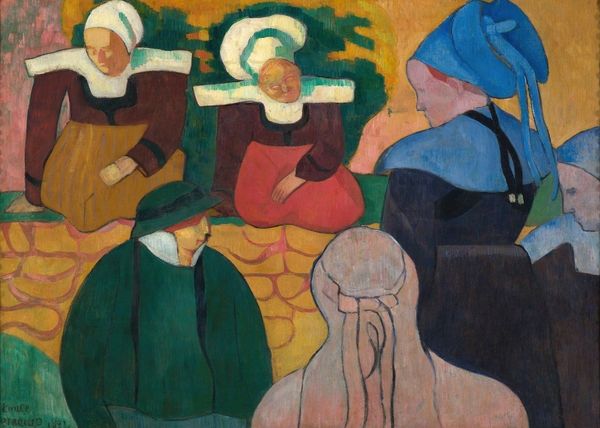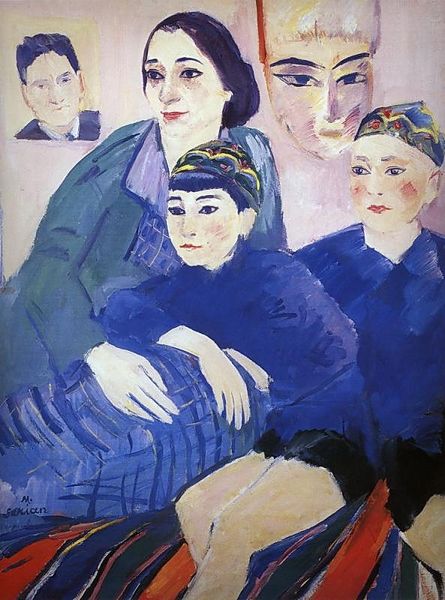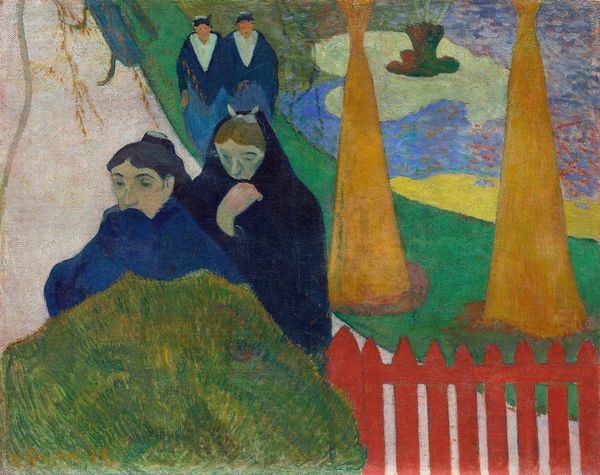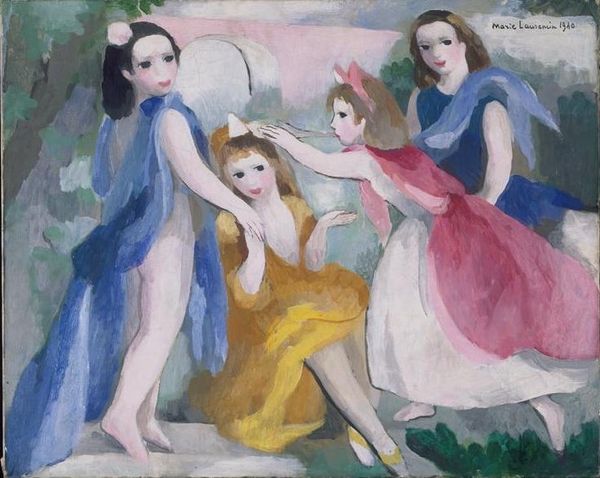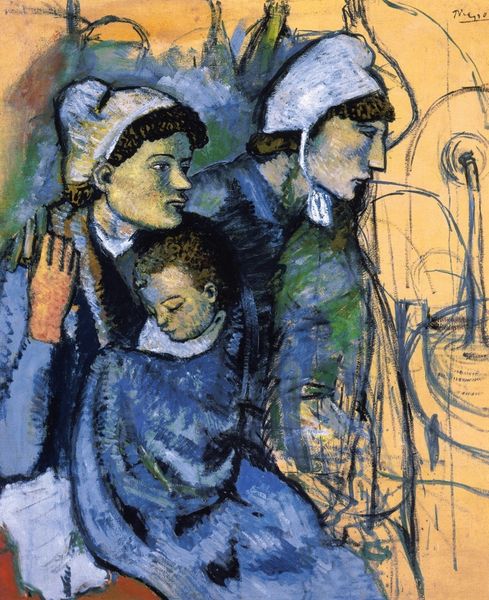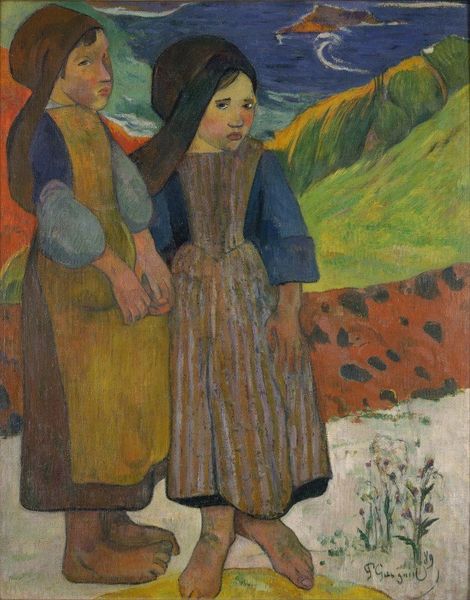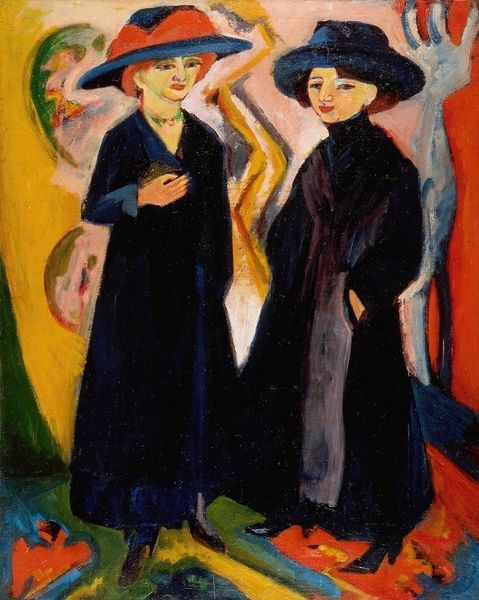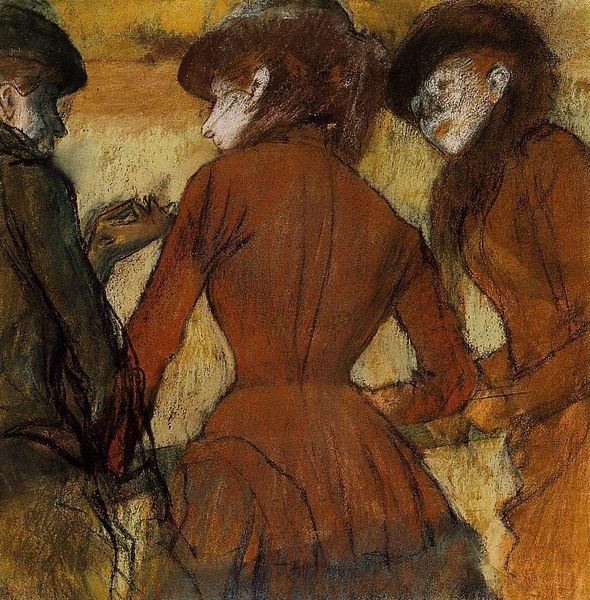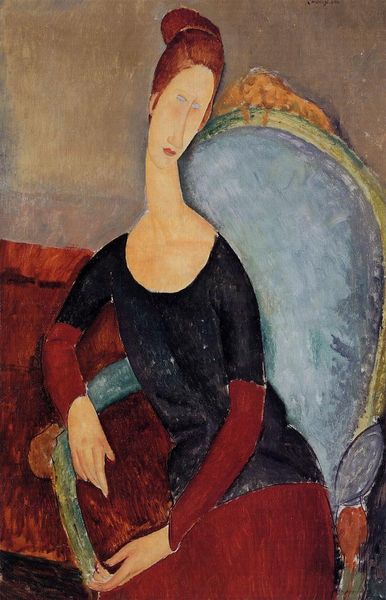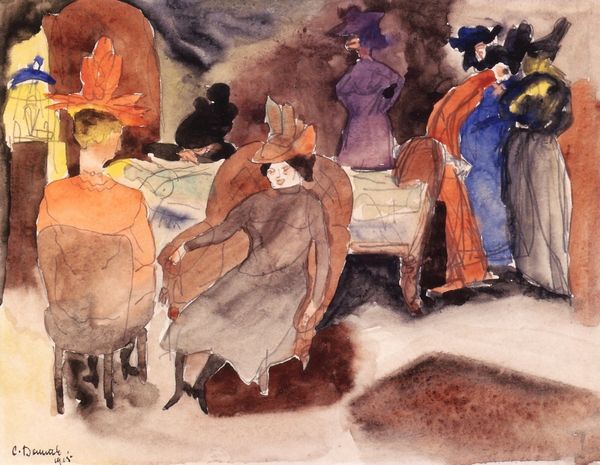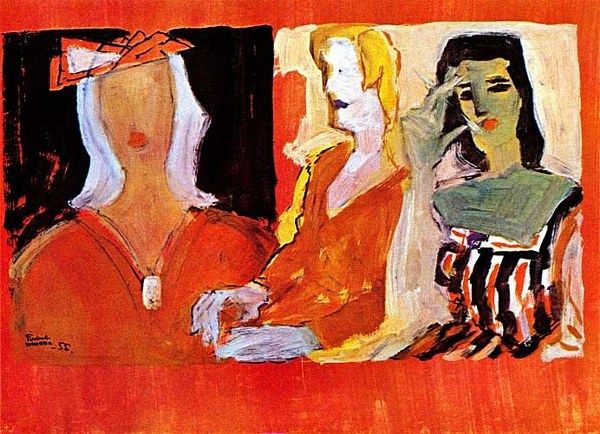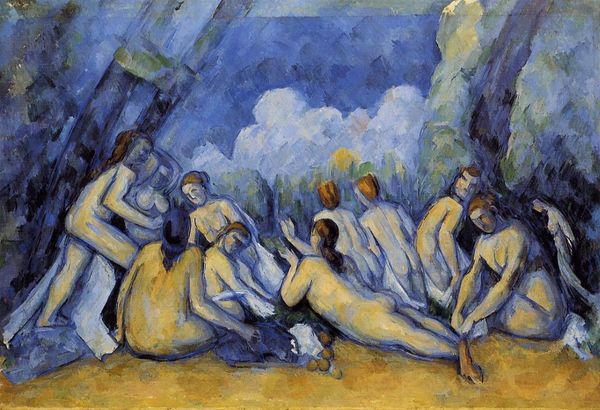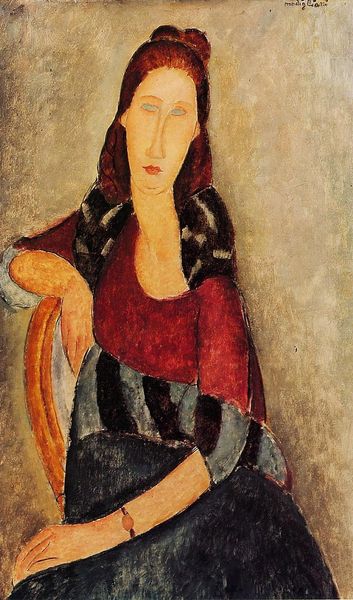
painting, oil-paint
#
portrait
#
cubism
#
art-nouveau
#
painting
#
oil-paint
#
oil painting
#
famous-people
#
group-portraits
#
portrait art
#
modernism
Copyright: Public domain US
Editor: Here we have Marie Laurencin’s "Apollinaire and His Friends," painted in 1909 using oil paint. What strikes me is this stylized depiction of a literary salon. The figures seem almost suspended, and there’s this unusual, almost dreamlike quality to the scene. How do you interpret this work, considering its historical context? Curator: It's tempting to view "Apollinaire and His Friends" simply as a portrait of artistic circles. But consider how Laurencin, a woman artist in a male-dominated avant-garde, positions herself and her subjects. How does she use the Cubist style, typically associated with male artists like Picasso and Braque, to represent these figures? Editor: I notice that while the composition nods to Cubism, it's much softer and more romantic than what Picasso and Braque were doing. Do you think this was a conscious choice to create a distinct feminine aesthetic? Curator: Exactly! Laurencin subverts the geometric fragmentation of Cubism, using it instead to create a sense of emotional atmosphere and subtly critique the male gaze. The inclusion of Apollinaire, a prominent figure in the art world, anchors the painting to a specific social moment. It raises the question: Whose story is being told here, and by whom? The art world, like many institutions, shapes which voices are amplified and whose perspectives are obscured. The artist gives a twist that redefines representation beyond established masculine codes. Editor: That's fascinating. I hadn't considered how Laurencin was actively engaging with and challenging the Cubist movement through this piece. It really changes how I see the power dynamics represented. Curator: It does, doesn't it? The beauty and complexity of "Apollinaire and His Friends" lies in its subtle challenge to artistic norms. Editor: I am thinking about museums now. That really changed my view of this group portrait.
Comments
No comments
Be the first to comment and join the conversation on the ultimate creative platform.
